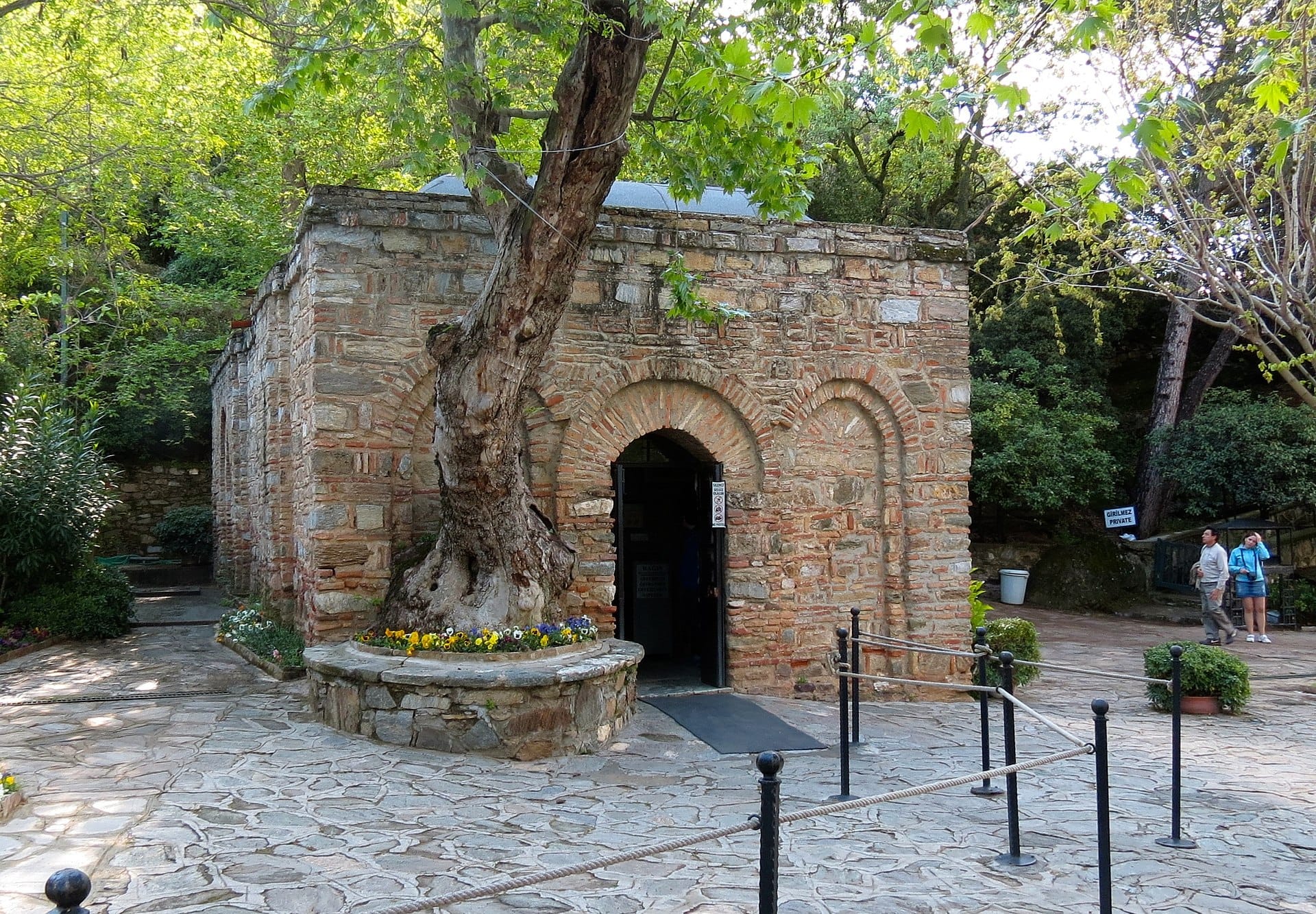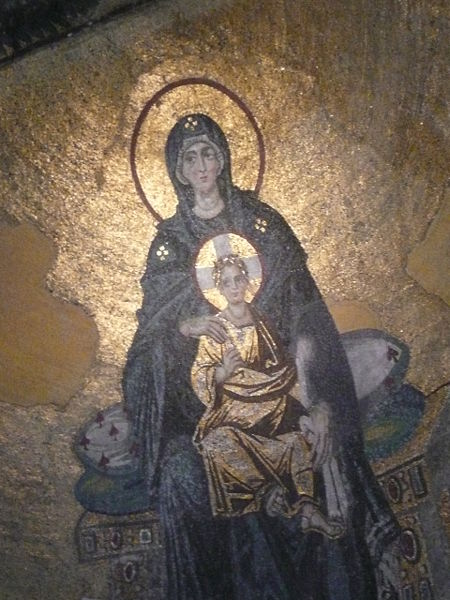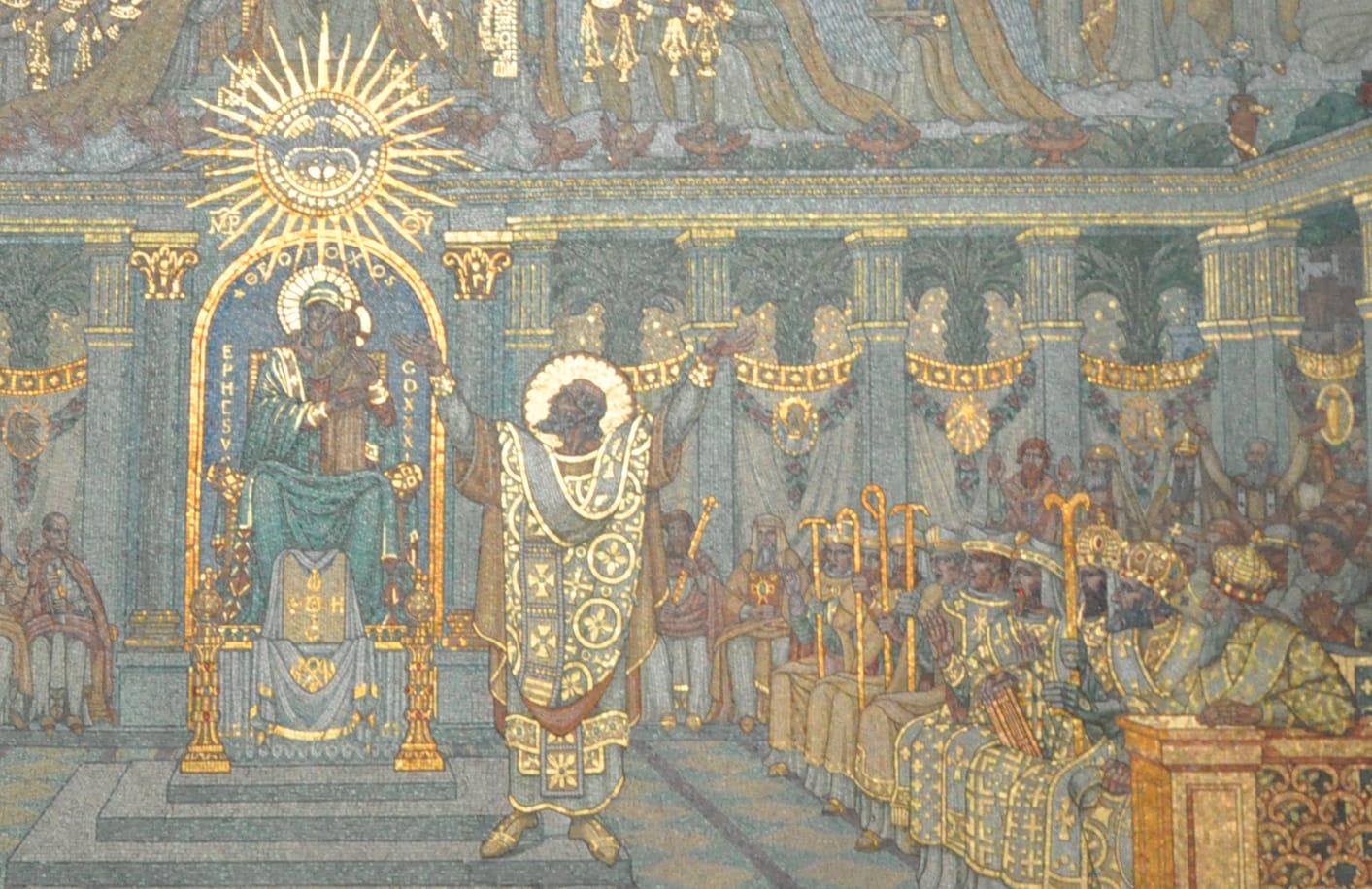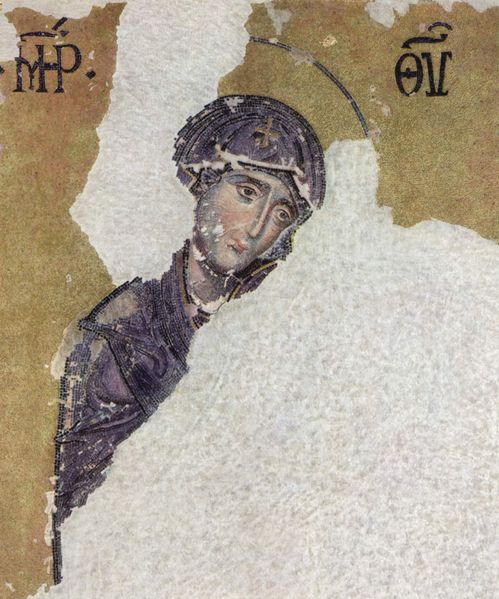The Cult of the Virgin Mary

To paraphrase Voltaire, if the Virgin Mary had not existed, it would have been necessary to invent her, to compensate for Christianity’s male bias.
Her house - shown above - was "found" at Ephesus, Turkey (Efes in Turkish) late in the 19th century, but it's highly unlikely to be authentic. Over the centuries though, she was embraced by Byzantines and then Muslims and Christians of all classes. My guess is that it started among the elites and more among women than men, at least initially. The Protoevangelium of James and Origen’s subsequent writings on Mary's perpetual virginity elevated her status. By the time Constantinople and the Byzantine Empire were founded in 330, it was with a mass dedicated in her name. At the Council of Ephesus in 431, she became the Theotokos (the Mother of God, not just of Jesus) and the Empress Pulcheria built many churches in her honor, including Blachernae.
Like Pulcheria, the Empress Theodora (500-548), may have been one of those imperial women responsible for formalizing worship of Mary, although there is little historical evidence to support this, or to support anyone else doing it for that matter, but we know that Mary’s ascension accelerated in the 6th century AD. Even then it was known as the Cult of the Virgin Mary (originally “cult” was not a negative word).
The famous image below of the Virgin Mary and Jesus is from the apse of Hagia Sophia. It is its oldest surviving figural mosaic (as opposed to those mosaics without figures), dating back only to the 9th century because, prior to this, from what I can tell, figurative mosaics were not used inside the church. They were used elsewhere, of course, as in the surviving ones in San Vitale in Ravenna (here).

Many Christians today are blissfully unaware of these great mysteries at the heart of their religion: was Jesus human or divine or both and what about the Virgin Mary herself?
By the time Christianity became the official Roman/Byzantine religion, this mystery had been festering for some time, which is why the First Council of Nicaea was called in 325 AD to resolve it. It didn't. After Nicaea, the imperial Roman and Byzantine Church took the view that Jesus was both human and divine. Others disagreed. Anathemas and heresies were declared and thousands died. Mary remained sidelined.
But, in two subsequent councils, the Virgin Mary would play a key role. The first was The Council of Ephesus in 431, in the Church of Mary. During the debate, Nestorius argued that Mary should be called Christotokos, (Greek for “Christ-Bearer”) and not Theotokos (Greek for “God-Bearer”). He was denounced by Cyril on the grounds that he was splitting Jesus into two persons, one human and one divine, in one body. Thereafter it was decreed that Jesus was one person, not two – both completely God and completely man.

The Virgin Mary would thenceforth be known as Theotokos, the Mother of God. This marked a significant boost in Mary’s status and her Cult accelerated in popularity. Not only had she given birth to God rather than just Christ, this also pushed Christianity further into the truly miraculous where it could not be challenged. No longer would theologians wrestle with embarrassing questions about how the Holy Spirit managed to get Mary pregnant.
In Syria and Egypt, many continued to argue that Jesus had only one nature: divine. They were branded as heretics. Rather than give in, the Syrian and Oriental Christian churches went their own way, as they have ever since. The Arians of Europe, on the other hand, claimed Jesus was fully human and not divine, a view that was popular among the invading Goths. They too were branded heretical and their ideas went underground.
None of this resolved the second issue, which was how did the two natures of Christ (God and man) relate to one other? That was semi-resolved at the Council of Chalcedon in 451, which ruled that God exists in three persons (Father, Son and Holy Spirit = The Trinity) which are all of one substance or essence (and are held together by “hypostatic union”). As this was completely incomprehensible, another term “mystical union” was invented. This was hardly satisfactory but it had the saving grace that it again elevated things to a miraculous level where they couldn’t be challenged.
The mystery of Jesus’ nature has never been resolved really, which is why no one talks about it these days. It’s said to be simply beyond human comprehension. But things still had to be worked out with Mary. As the 12th C. mosaic of the Virgin Mary from Hagia Sophia below shows, the sorrowful madonna would come to compete with the all-powerful mother.

